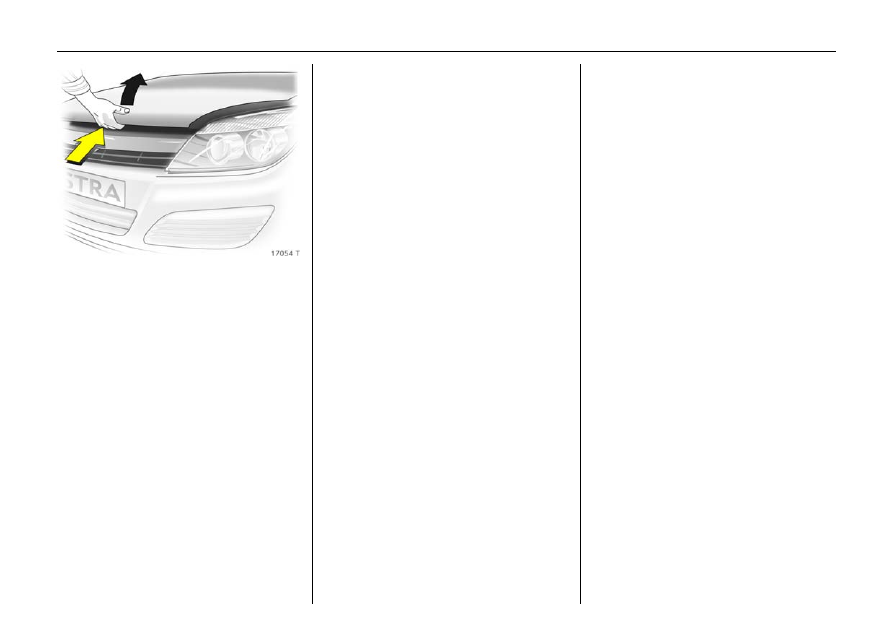Vauxhall Astravan (2007 year). Manual - part 16

242
Self-help, vehicle care
There is a safety catch on the underside of
the bonnet: lift this upwards and open the
bonnet.
Dirt on snow on the bonnet can slide onto
the windscreen when opened and block the
air intake.
Air intake, see page 174.
The bonnet is held open automatically 3.
In an alternative version, the bonnet is held
open by inserting the support that is
located across the radiator into the small
elongated hole in the underside of the
bonnet.
Push support firmly into holder before
closing the bonnet. Lower bonnet and
allow to fall into lock.
Check that the bonnet is locked in position
by pulling at its front edge. If it is not
engaged, repeat the procedure.
Starting
Do not start with quick charger
This prevents damage to electronic
components.
Do not start by pushing or towing
Because your vehicle is fitted with a
catalytic converter, it must not be started
by pushing or towing, see page 204.
Vehicle with the Open&Start system 3 must
not be started by pushing or towing if the
battery is discharged, since the steering
column lock cannot be released.
The vehicle can only be started using jump
leads – see following page.